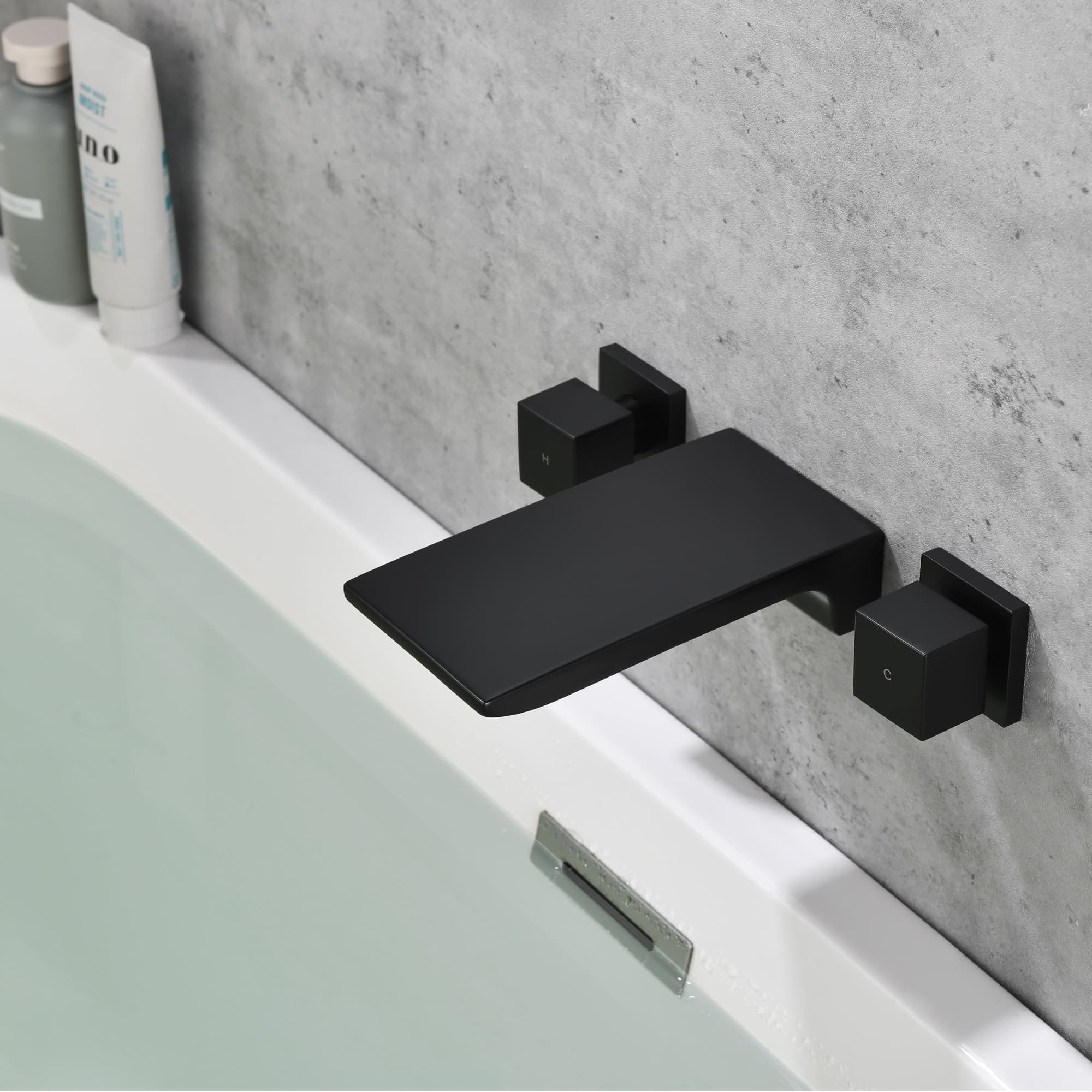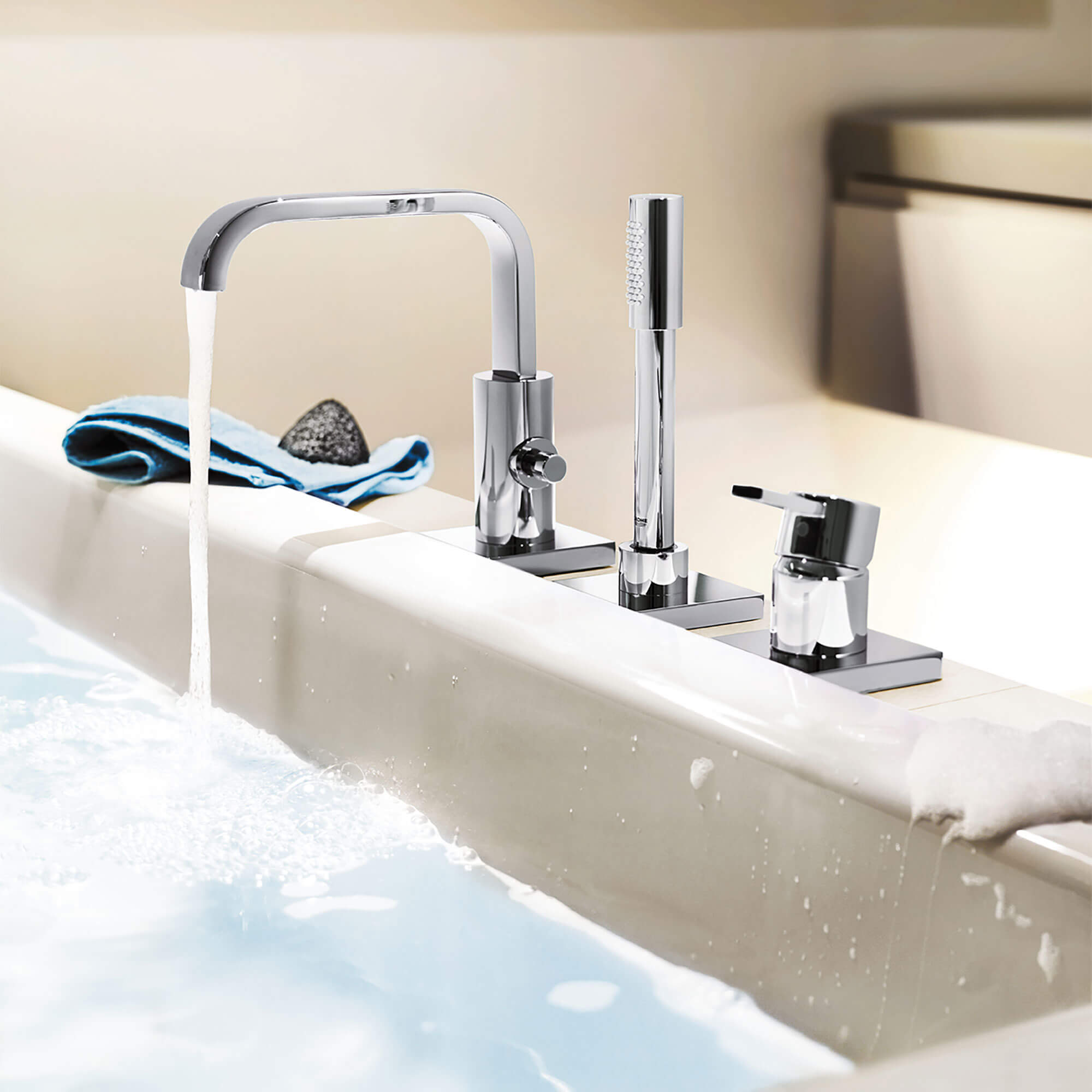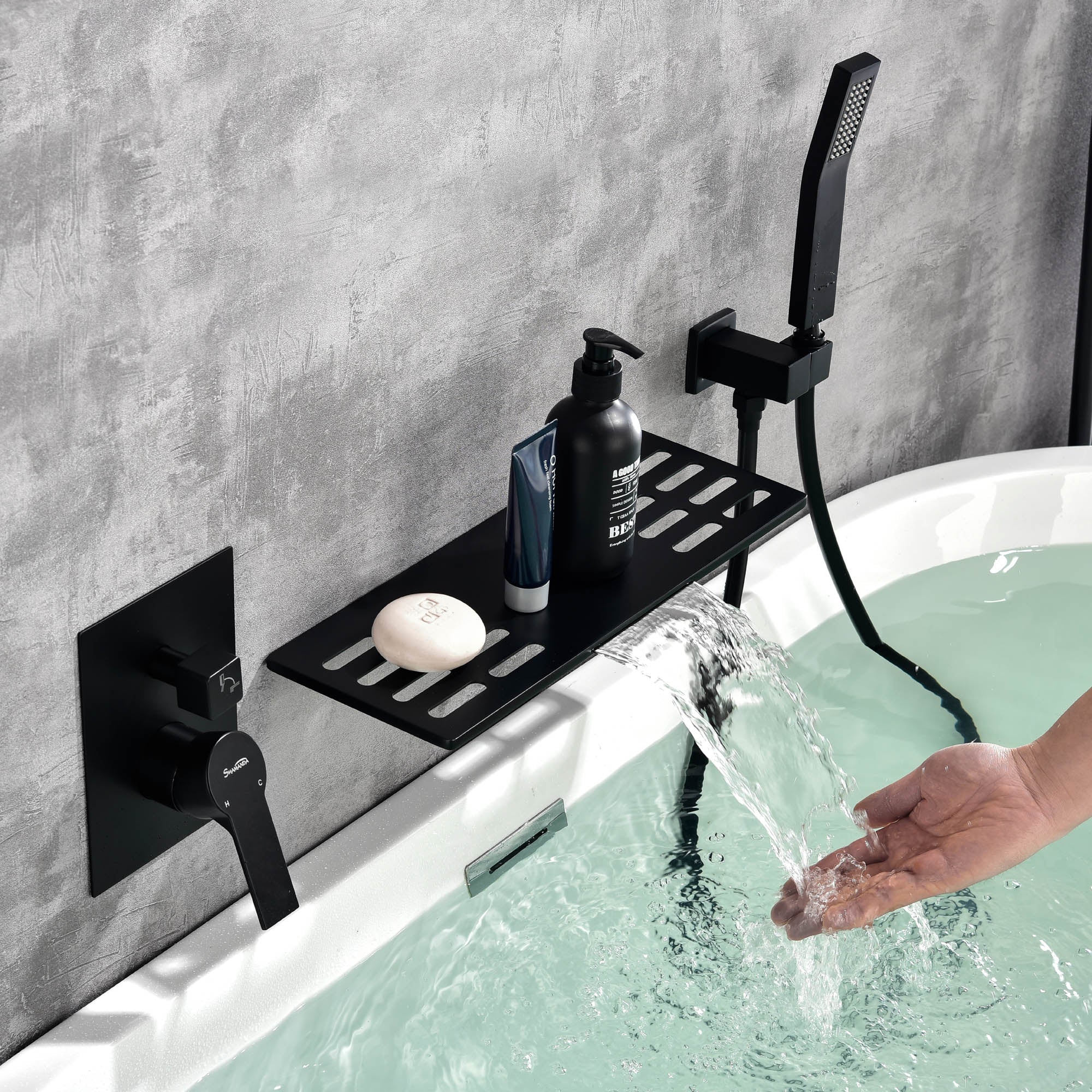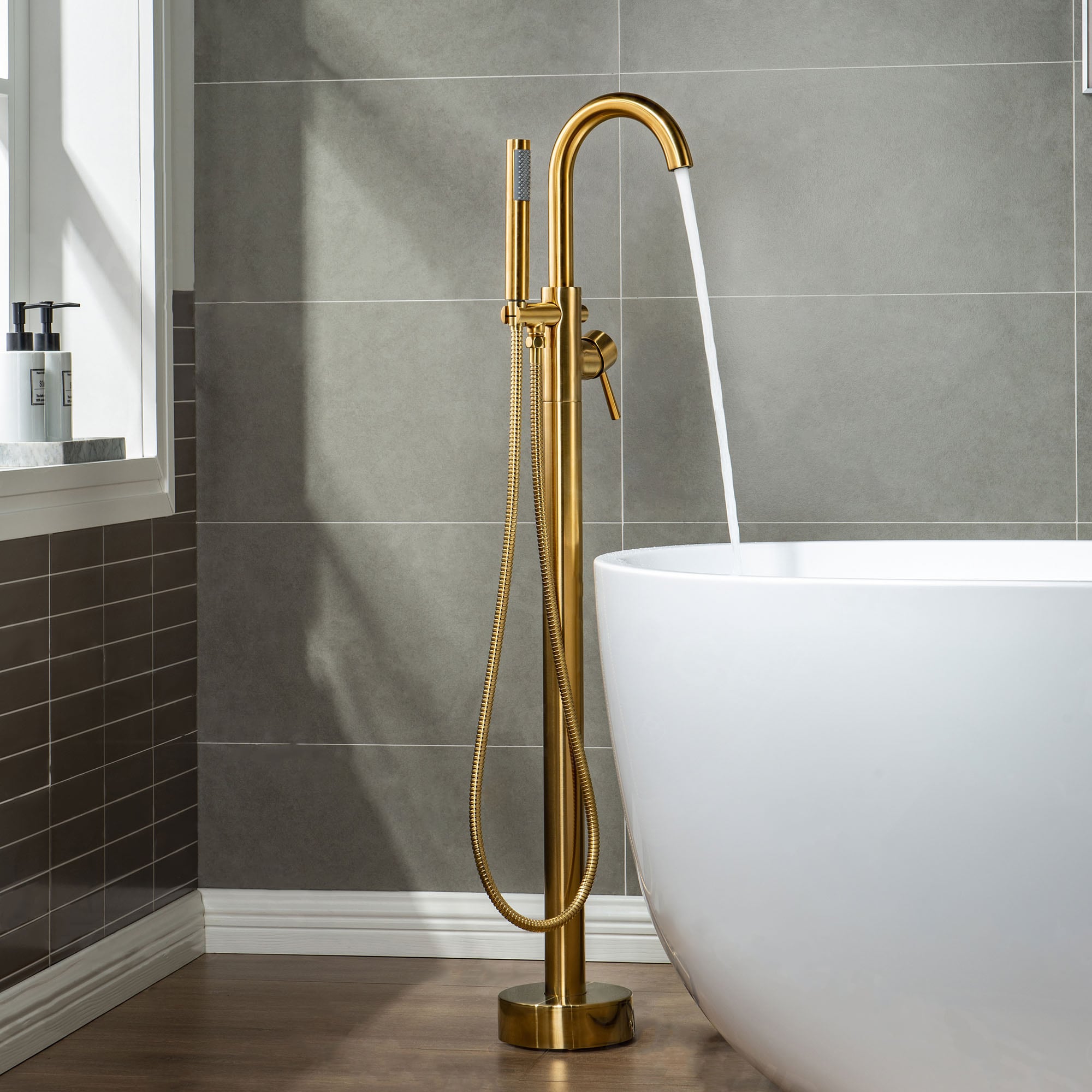Replacing bathtub faucets can enhance the functionality and aesthetic appeal of your bathroom. Whether you are updating an outdated faucet or addressing a leak, this guide will provide you with a step-by-step process to replace your bathtub faucets effectively and efficiently.

Materials and Tools Needed:
Before you begin replacing the bathtub faucets, gather the following materials and tools:
- New bathtub faucet set
- Plumber’s tape
- Adjustable wrench
- Screwdriver (flathead and Phillips)
- Basin wrench
- Pipe threads
- Plumbing lubricant
- Bucket or towels
Turn Off the Water Supply:
Locate the main water shut-off valve for your home and turn it clockwise until fully closed. This will help prevent any water flow during the faucets in style replacement process. To ensure the water is off, run the existing faucets until the water stops.
Remove the Old Faucet:
Once the water supply is turned off, remove the existing faucet handles. Most faucet handles are secured with a screw, which can be found either under a decorative cap or directly accessible on the handle. Use an appropriate screwdriver to remove these screws and then carefully pull the handle off.
Next, locate and remove the retaining nut or retaining clip that holds the faucet cartridge in place. This may require the use of an adjustable wrench or a pair of pliers. Once the retaining nut or clip is removed, pull the old cartridge out.

Prepare the New Faucet:
Before installing the new bathtub faucet, ensure the new faucet set is compatible with your existing plumbing. Refer to the manufacturer’s instructions that accompany your new faucet set for proper measurements and installation techniques.
Wrap the threads of the new faucet spout and handles with plumber’s tape. This creates a seal to prevent leaks once the new faucet is installed. Apply a small amount of plumbing lubricant to the spout’s O-ring or gasket to facilitate smooth installation.
Install the New Faucet:
Insert the new cartridge into the faucet body, ensuring it is properly seated. Secure it in place with the retaining nut or clip, following the manufacturer’s instructions. Use an adjustable wrench or pliers to tighten the retaining nut or clip, but be cautious not to overtighten and damage any components.
Attach the new faucet handles by aligning them with the cartridge and tightening the screws securely. Be mindful not to overtighten and risk damaging the handles or screws.
Install the New Faucet Spout:
Apply a small amount of plumbing lubricant to the threads of the new faucets dripping. Insert the spout into the mounting hole, gently twisting it to ensure a secure fit. Tighten the spout collar nut beneath the bathtub using a basin wrench or pliers. Remember not to overtighten, as it may damage the connections.
Check for Leaks and Restore Water Supply:
Turn the main water supply back on by slowly opening the shut-off valve in a counterclockwise direction. Check for any leaks around the new faucet and the connection points. If you notice any leaks, tighten the affected connections as necessary.
Allow the water to run through the newly installed faucet for a few minutes to clear any air and debris from the pipes. Keep an eye out for any persistent leaks or irregularities during this process.

What are the styles of bathtub faucets?
Bathtub faucets not only serve a functional purpose but also contribute to the overall aesthetic appeal of the bathroom. With various styles, finishes, and features available, you can find a bathtub faucet that complements your bathroom design and meets your personal preferences.
Wall-Mounted Faucets:
Wall-mounted bathtub faucets are a popular choice for modern and contemporary bathroom designs. These faucets are installed directly onto the wall above the bathtub, creating a sleek and minimalist look. Wall-mounted faucets often feature a single-lever or two-handle design, allowing you to control the water flow and temperature easily. They provide a clean and uncluttered appearance, especially when paired with a freestanding or built-in bathtub.
Deck-Mounted Faucets:
Deck-mounted faucets are a versatile option that can be installed on the deck or rim of the bathtub. These faucets come in a range of styles, including single-hole, widespread, and center-set designs. Single-hole faucets have a single lever or handle, while widespread faucets feature separate handles and a spout. Center-set faucets have two handles combined on a single base. Deck-mounted faucets provide a traditional and visually appealing look, perfect for various bathroom designs.
Freestanding Faucets:
Freestanding faucets make a bold statement in the bathroom, especially when paired with a freestanding bathtub. These tall and elegant black faucets stand independently, often featuring a single, elongated spout with a lever or knob for water control. Freestanding faucets are available in various styles, including modern, traditional, and transitional designs. They add an element of luxury and sophistication to the bathroom, creating a focal point that enhances the overall ambiance.

Clawfoot Tub Faucets:
Clawfoot tub faucets are specifically designed for clawfoot or freestanding tubs, adding a touch of vintage charm and elegance. These faucets typically have a classic and ornate design, featuring intricate details and cross handles. Clawfoot tub faucets are available in wall-mounted and deck-mounted options, allowing you to choose the style that best suits your bathroom decor. They are often made of brass or other high-quality materials to evoke a sense of nostalgia and timeless beauty.
Waterfall Faucets:
Waterfall faucets create a unique and visually striking effect by letting the water flow in a cascading manner. Often found in contemporary and modern bathroom designs, waterfall faucets are characterized by their wide and flat spouts that produce a tranquil and soothing stream of water. They can be wall-mounted or deck-mounted, and some models feature LED lights to enhance the waterfall effect. Waterfall faucets exude elegance and create a spa-like atmosphere in the bathroom.
Thermostatic Shower System:
For those seeking a multifunctional and luxurious bathing experience, a thermostatic shower system is an excellent option. This type of faucet combines both a showerhead and bathtub faucet, allowing you to easily switch between the two. Thermostatic shower systems offer precise temperature control, water pressure adjustments, and various spray patterns. They are available in contemporary and traditional designs, making them a versatile choice for any bathroom style.

Conclusion:
Replacing bathtub faucets can be a relatively straightforward home improvement project with the right guidance. By following the step-by-step guide provided above and taking necessary safety precautions, you can successfully replace your bathtub faucets. Enjoy the enhanced functionality, updated aesthetic, and improved water flow that the new faucet brings to your bathroom.
